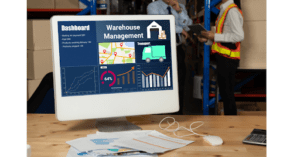Since people have moved into the virtual world for transaction, browsing and purchase, organizations now have to build strategies to provide a seamless experience in the digital arena. In this post, we’ll explore everything you need to know about digital touchpoints – from what they are and why they matter, to mapping the customer journey and identifying different types of touchpoints. We’ll also understand how you can optimize these touchpoints for maximum impact.
What are Digital Touchpoints?
Digital touchpoints refer to any customer-business interaction that takes place through digital channels like social media channels (Twitter, Facebook), emails, websites and its chatbots, mobile applications. Understanding these touchpoints is vital in creating a seamless customer journey and improving satisfaction. By analyzing behavior at each point, businesses can detect issues and enhance the experience. Effective use of digital touchpoints can also foster brand loyalty and repeat business.
Why are digital touchpoints important?
Digital touchpoints refer to a customer’s interaction with a brand through online channels. They are crucial for businesses to create personalized and seamless experiences that increase satisfaction and loyalty. Identifying key touchpoints allows optimization of digital strategies, leading to conversions, and revenue growth.
Mapping the Customer Journey
Incorporating multiple secondary key terms into your digital strategy is key when mapping your customer journey. Understanding potential customers’ needs at every stage of their buyer’s journey can significantly increase retention rates, satisfaction scores, and even referrals. Personalized social media posts, live chat during shopping cart checkout, effective email marketing campaigns timed strategically during each stage of their journey map are all ways to improve their digital touchpoint experience. When thinking about how to optimize these stages in your business strategy timeline, consider using an effective CRM system that measures Net Promoter Scores (NPS), integrates user-generated content on Twitter ads as well as blog posts CTA’s that guide potential customers to the next step.
What is customer journey mapping?
Mapping essentially denotes that when a customer is inside a brand’s ecosystem, marketers capture a customer’s interaction during the entire process, how they interact, browser and search for, from the offerings. Here, marketers map the customer’s journey which includes initial interaction, onboarding, purchase and transaction and post-purchase satisfaction. A customer journey mapping tool can map and capture candid feedback during the entire journey. During mapping, one can detect unhappy customers, pain points, or opportunities to cross sell and upsell.
How to map the customer journey?
To map the customer journey, first identify all touchpoints with your brand which includes social media interactions and website visits. Analyze how customers engage with them and use data to better understand their needs at each stage. Finally, integrate these steps into a seamless digital experience that’s both easy and enjoyable for your customers. Marketers need a robust tool to capture all interactions within the ecosystem with the help of feedback surveys that are systematically distributed at touchpoints.
Types of Digital Touchpoints
Digital touchpoints have become a common place of contact between brands and customers. Currently, the urge to improve the CX in these touch points have become a priority. Customers could be anywhere – be it website, social media platforms or speaking to the service teams. To create a positive experience for the customer, each touchpoint should be designed with the customer in mind. Brands need to ensure that every interaction is cohesive with their overall brand strategy. By doing so, buyers will feel valued and understood, leading to increased loyalty and retention rates.

Website
When it comes to digital touchpoints in a customer journey, nothing beats a well-designed website. By ensuring its ease of use and navigability, along with valuable information about your offerings, you’ve already won half the battle. Make sure it’s optimized for mobile devices with clear calls-to-action to encourage visitors to take the next step in the buyer’s journey. Understanding customer pain points can help tailor the experience, while offering multiple channels such as live chat, email or phone support can improve customer retention and overall satisfaction.
Chat bots
Chatbots simulate human conversation and provide personalized recommendations. Chatbots are trained to respond to complex queries, understand pain points and attend to constant queries round the clock. Since this technology is fatigue proof, chat bots can capture feedback and collect massive amounts of data without any glitch. Chat bots can be used in-app or on websites. By using chatbots effectively in the buyer’s journey stage of the journey, businesses can ensure better CX.
Social media
Social media is a place where brands can regularly track performance metrics, constant conversations and in-moment banter. Social media is a platform that never sleeps. This makes it the most crucial touchpoint where brands can assess user behaviour, patterns and real-time trends, map the customer persona, and offer solutions to overcome negative experiences.
Customer reviews
When it comes to digital touchpoints, customer reviews are an effective way to build brand loyalty. Reviews and testimonials are social proof that assures new customers of a brand’s social standing. Places such as Google reviews, websites or third party review websites are a good place to capture feedback and assess detractors or promoters. Responding to reviews, whether they’re positive or negative, shows that you’re committed to improving the customer experience and making things right. By encouraging shoppers to leave reviews through incentives or follow-up emails, you can generate referrals and retain loyal customers.

Self service kiosks
Self service kiosks are free of manual intervention where people can obtain information, conduct transactions and enjoy a contactless experience. Since they are free of human intervention, self service kiosks can be used by anyone to order and pay as per preference. So it is important to consider the user base who will use these kiosks, and how to make their transactions free of obstacles. Places such as restaurants, shopping malls and airports extensively use self-service kiosks.
Phone calls
Phone calls represent one of the most significant touchpoints in the customer journey where you can either win or lose customers based on their experience. A friendly tone along with human-like empathy can create a lasting impression on potential customers or detractors. Ensure that your phone system is easy to navigate and customers are warmly greeted when they call. Empower your support team with adequate tools and information to provide excellent service. Implementing call recording programs helps monitor the quality of calls while tracking them in your CRM system helps offer better customer support.
Emails have been extensively used by organizations as a digital touchpoint in the customer journey. Emails are a great way to share newsletters for new product offerings, capturing feedback via surveys and email addresses of the user base. In recent years, Google has come up with AMP dynamic email where respondents can answer surveys without going into an external browser. Marketers can use email to its full potential by curating customized messages , capturing feedback and showcasing new service or product offerings to their user base.
Ecommerce stores
Ecommerce stores witness plenty of footfalls on a daily basis. The in-store experience gets replaced by digital store experience where e-commerce takes the centre stage. To facilitate visitors to have a seamless service, websites can be curated for the benefit of the user. Websites can be equipped with self service section, contact details of every store or a toll-free contact details that reaches the customer support. Ecommerce sections also focus on transaction pages and a pain-free purchase experience (including chatbots and web based feedback surveys).
In-app survey
Mobile applications are the most important customer touchpoint where users expect a seamless transaction, smooth user interface, an informative application and a well-trained AI chat bot. Plenty of applications offer in-app surveys that collect customer satisfaction metrics of net promoter score, CSAT scores or CES metrics(customer effort score. All feedback gathered becomes a standardized method of comprehending if service levels were at par or to detect unhappy customers (to close feedback loop).
Optimize the Digital Touchpoints in the Customer Journey
In a digitally-driven world, people expect seamless service, in-moment interaction and round the clock service assistance. This will be possible when brands map out the hot touch points and curate strategies to maintain customer retention rate. Here are some of the ways organizations can optimize the digital touch points.

Capture real-time trends
It is recommended that customer feedback and trends stay real time in nature. People expect resolution and they expect it at the earliest. Detractors can risk a negative word of mouth review in the online forum that can hamper the online reputation. Real time feedback collection can detect unhappy customers, gather in-moment feedback and offer solutions for consumers who may have had a negative experience. Tracking real-time patterns can enable brands to keep a tab of the latest user preference, and purchasing behaviour.
Automation for a better CX
Manual handling of data and deploying of surveys is prone to manual errors and miscommunication. Since customers demand a smooth service, automation is now the most utilized go-to solution. Automate the collection of feedback using trained AI, launching instant Whatsapp surveys, dynamic email surveys and curating a customer journey mapping system using Merren. All closed-ended and open-ended feedback gets collected on the dashboard for further analysis.
Define your touch point
It is not always feasible to keep a track of every touchpoint. Deploy specific surveys where brands can ask users, what medium they use to interact with the brand. Using this data, define the touchpoint, allocate resources, train the staff and offer the necessary service protocols for an improved CX.
Analyze data often
Data is gold. Data is a window to comprehend the latest trends, types of feedback captured and how customers interact with your brand. Collect data using mediums where your user base is present. This could be social media channels, messenger based applications, website based chat bots or even via interactive emails. Using data available on the dashboard, businesses can curate better communication strategies to maintain a standardized method of serving their customers.
Conclusion
Creating seamless digital touchpoints in a customer journey is essential for providing a positive and memorable experience for your customers. Understanding digital touchpoints and mapping the customer journey is the first step towards optimizing them. By optimizing these touchpoints, you can create a personalized experience for your customers that will help build loyalty and trust.
With the right tools and strategies, it’s possible to create seamless digital touchpoints that provide an excellent customer experience. To create your first customer journey map, sign up for our 14 day free trial, without any credit card obligations.
